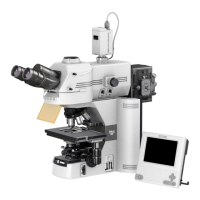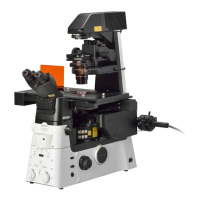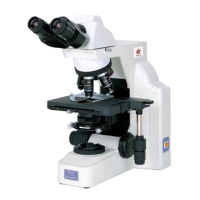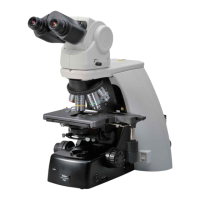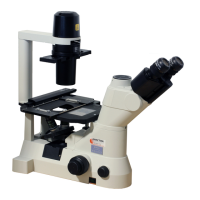Chapter 3 Individual Operations
3.16 Polarization Microscopy
50
P-CQ quartz wedge
The P-CQ quartz wedge is used by inserting it into
the slot of the intermediate tube in place of the
P-CL 1/4λ & tint plate.
The quartz wedge is engraved with a scale and can
be used for rough measurement of retardation in
the range of 1λ to 6λ.
1 Determination of extinction position
Rotate the stage with the specimen under the crossed Nicols to find the direction where the
part of the specimen to be measured appears darkest.
2 Determination of subtraction position
Rotate the stage 45° from the extinction position to the diagonal position (direction where
the specimen appears brightest). Insert the P-CQ quartz wedge into the slot of the
intermediate tube and confirm that the interference color of the section of the specimen to
be measured changes toward the lower order side. If the interference color changes toward
the higher order side, rotate the stage another 90°.
3 Measurement
Move the section of the specimen to be measured
to the center of the crosshairs of the eyepiece.
Next, slide the P-CQ quartz wedge along the slot
and observe that the interference color sequentially
changes. Stop sliding the quartz wedge where the
dark stripe covers the section of the specimen to
be measured. Reading the value from the quartz
wedge scale at that time can make a rough
measurement of retardation.Retardation can be
measured even more accurately by using the P-CS
Sénarmont compensator in combination with the
P-CQ quartz wedge.
Read the scale.
P-CQ quarts wedge

